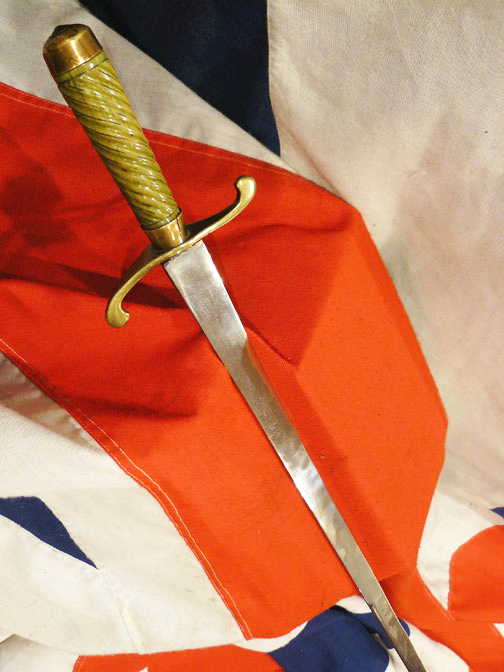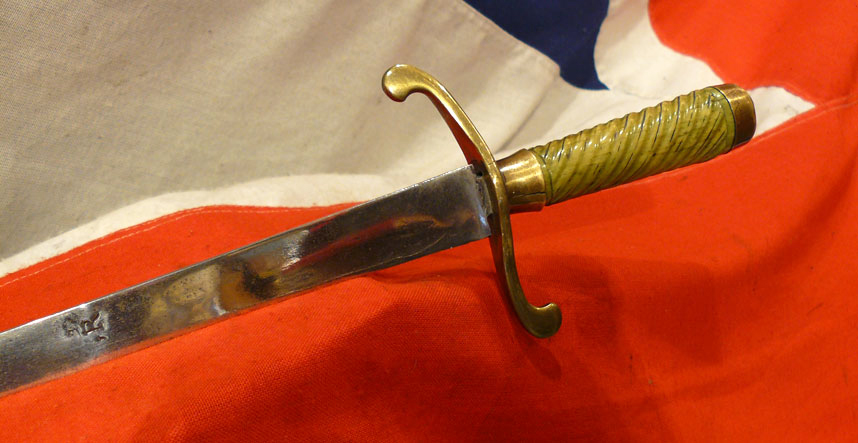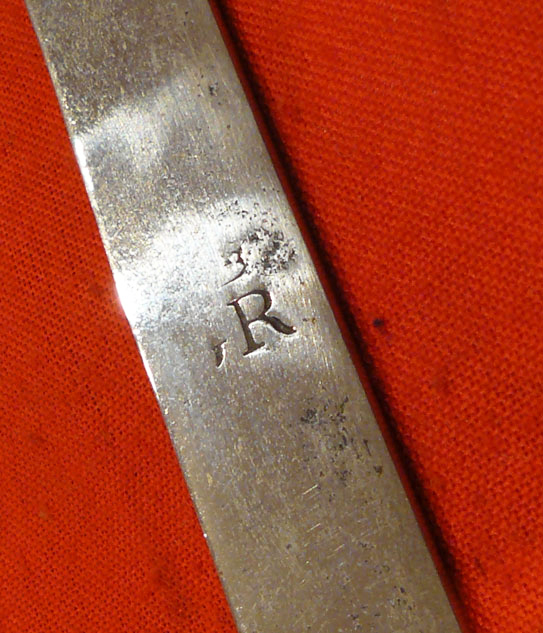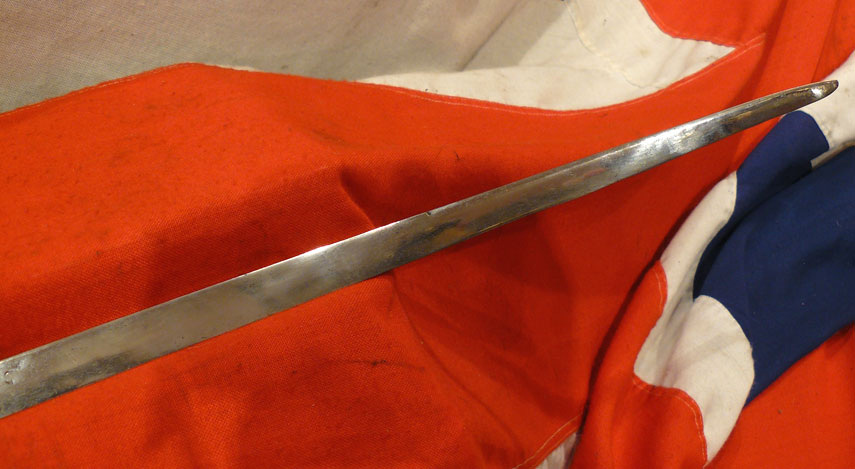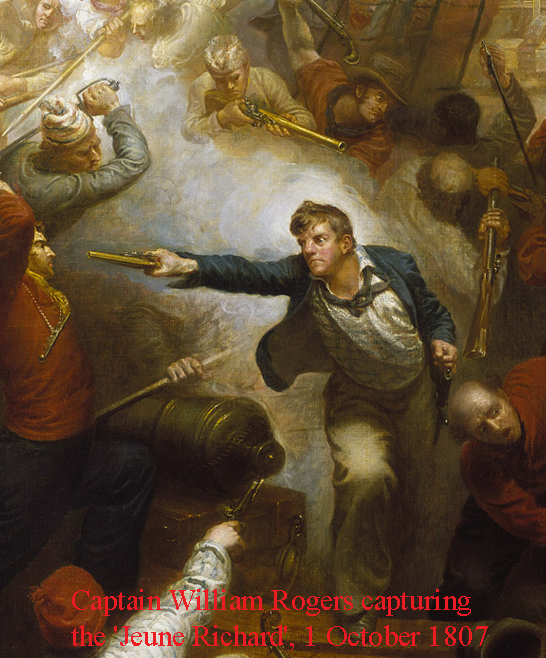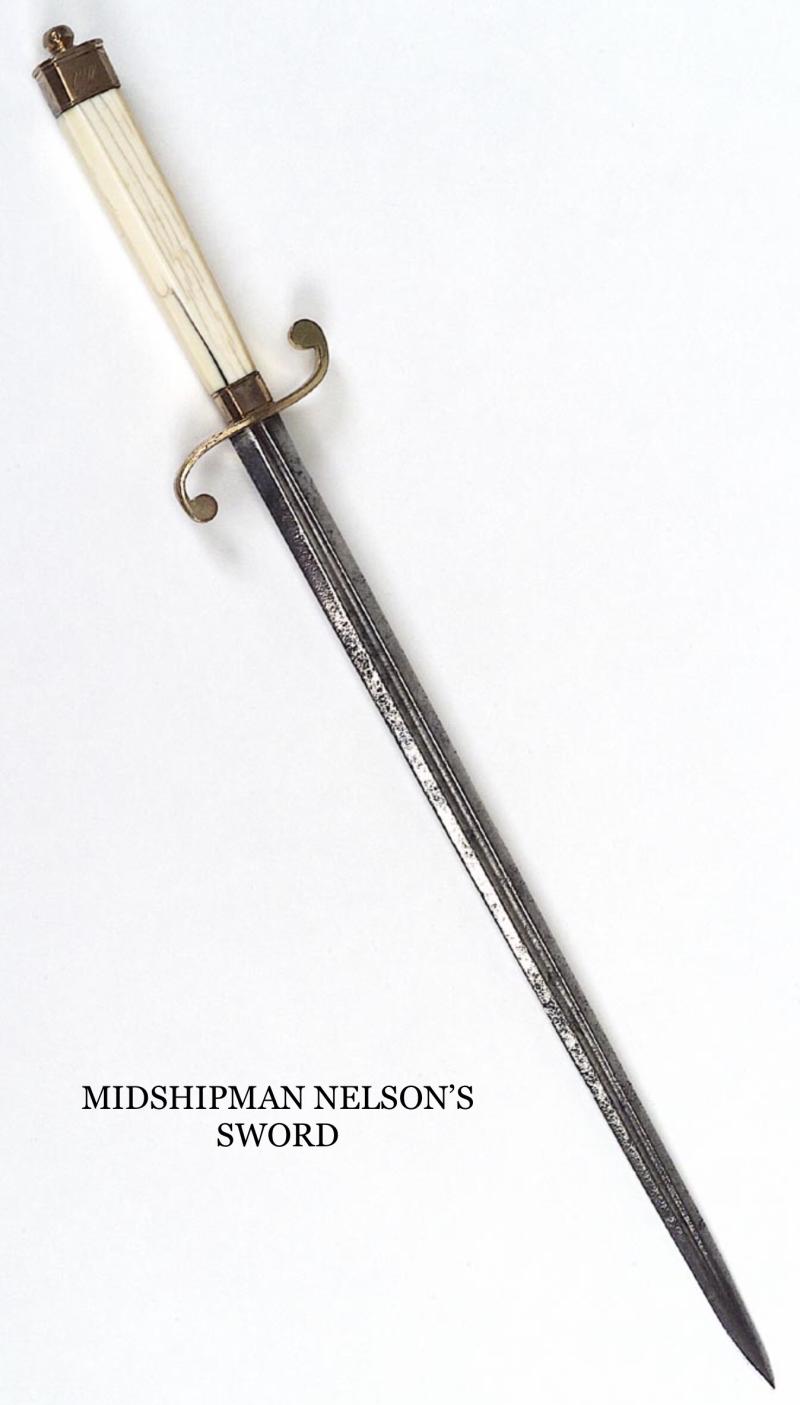A Fabulous 18th Century Carved Spiral Hilted Royal Naval Officer’s Short Sword
With spiral carved green stained bone hilt. Long slender blade with GR crown stamp. Brass S quillon crossguard with dome top brass pommel. Made in the 1770's, and used by a Royal Naval midshipman and officer right through to the end of the Napoleonic Wars era. A most beautiful Royal Naval officer's sword/long dirk of very nice quality indeed. hilted swords stained green became ultra high fashion in the mid to third quarter of the 18th century, in fact General George Washington carried a green stained spiral hilted sword in his role as commander-in-chief of the American Continental Army during the Revolutionary War. In the National Maritime Museum is a most similar S quillon carved hilted short sword dirk that is inscribed to the reverse of the locket, and engraved with the words 'GIVEN TO MID HORATIO NELSON R.N. H.M.S. RAISONNABLE BY MAURICE SUCKLING R.N. 1770'. According to a label attached to this dirk, until 1878, it was in the possession of Mrs Earwater, wife of Mr Thomas Earwater, solicitor of Somerset House, and aunt of the late Admiral S.V.Y. de Horsey, son of Admiral Sir Algenon de Horsey. As a boy, William Westley Manning often saw the dirk, which was displayed in Mrs Earwater's drawing room at Carlton Vale, St John's Wood, London. He purchased the dirk on the 20th May 1936 and after his death it was offered for sale as a genuine Nelson relic. It is likely that the dirk may have been made as early as 1770 and could therefore have belonged to Vice-Admiral Horatio Nelson (1758-1805). See the sword given to Nelson in the gallery photo 9.
We show original paintings of naval officers wearing this very type of edged weapon. One is of Captain William Rogers capturing the 'Jeune Richard', on the 1st October 1807, the sword at his waist belt appears to be a near identical dirk/sword. There are several other near identical examples, in the National Maritime Collection, and practically every officer from Nelson down to his midshipmen carried one similar at some time or another during their naval career, in combat service, in the late 18th to early 19th century. It would be an amazingly effective close combat weapon, both offensive or defensive, and would certainly do any eminently suitable job as was demanded of it. Although traditionally known as midshipman's dirks or swords these useful edged weapons were also worn at the time by officer's of all ages and rank while serving and in combat see picture in the gallery. The rank of midshipman originated during the Tudor and Stuart eras, and originally referred to a post for an experienced seaman promoted from the ordinary deck hands, who worked in between the main and mizzen masts and had more responsibility than an ordinary seaman, but was not a military officer or an officer in training. The first published use of the term midshipman was in 1662. The word derives from an area aboard a ship, amidships, but it refers either to the location where midshipmen worked on the ship, or the location where midshipmen were berthed.
By the 18th century, four types of midshipman existed: midshipman (original rating), midshipman extraordinary, midshipman (apprentice officer), and midshipman ordinary. Some midshipmen were older men, and while most were officer candidates who failed to pass the lieutenant examination or were passed over for promotion, some members of the original rating served, as late as 1822, 23 This The blade bears an official ordnance Crown GR stamp of King George IIIrd. It has a small hairline crack to one side of the hilt. Overall 28.5 inches long 24 inch blade
Code: 21978


